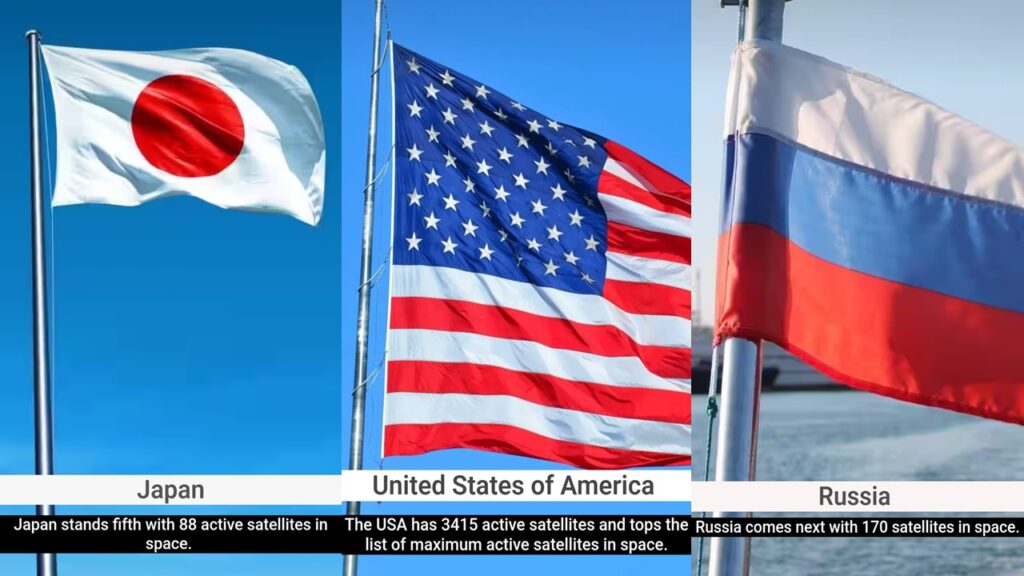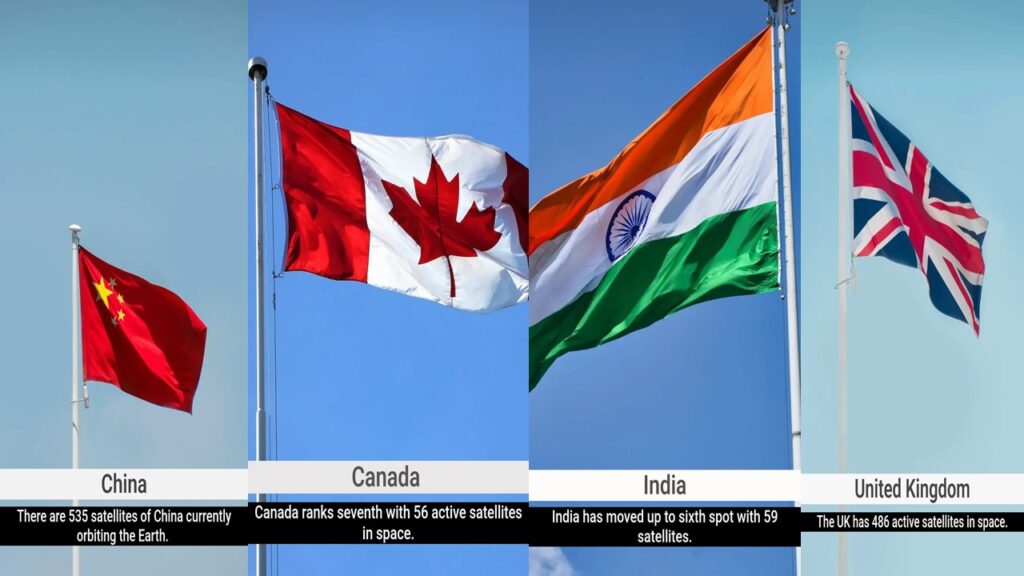“Explore the top 7 countries leading in satellite launches, diving into their total counts, objectives, and their global ranking in space technology.”
Space exploration has seen a rapid increase in recent decades, with various countries launching satellites for different purposes. Here, we will describe the top 7 countries with the highest number of satellites, their capacities, the years they’ve been actively launching satellites, and their global ranking in terms of strength and number. Additionally, we’ll touch upon their objectives behind these satellite launches.
1. United States
Satellite Count: Over 3415
Years Active:Since 1958
Capacity:Various, ranging from communication, navigation, weather observation to defense.
Global Rank:1
Objectives:The U.S. uses satellites primarily for communication, GPS navigation, climate observation, space exploration, and defense purposes.

2. China
Satellite Count:Over 535
Years Active:Since 1970
Capacity:They range from communication and broadcasting to space exploration and navigation.
Global Rank:2
Objectives:China’s rapid advancement in space technology has several objectives: improving communication, space research, lunar exploration, and a global navigation system similar to GPS.

3. United Kingdom
Satellite Count: Around 486
Years Active: Since 1962
Capacity: Predominantly communication, but also include earth observation and scientific satellites.
Global Rank:3
Objectives:The UK’s satellite objectives revolve around improving communication networks, space and scientific research, and observing climate patterns.
4. Russia
Satellite Count:Approximately 170
Years Active:Since 1957
Capacity:Varied functions, from space exploration, defense, communication, to earth observation.
Global Rank:4
Objectives:Russian satellites serve dual purposes, both civilian and military. Their main objective is space exploration, defense, and improving communication infrastructure.
5. Japan
Satellite Count:More than 88
Years Active:Since 1970
Capacity:Earth observation, communication, scientific research, and navigation.
Global Rank:5
Objectives:Japan focuses on enhancing communication networks, observing the earth’s climate and topography, scientific exploration, and developing their own navigation system.
6. India
Satellite Count:Over 59
Years Active:Since 1975
Capacity:Communication, earth observation, navigation, and space research.
Global Rank:6
Objectives:India’s main objectives with their satellite launches are improving communication, observing and predicting weather patterns, navigation, and space exploration.
7. Canada
Satellite Count:Around 56
Years Active:Since 1962
Capacity:Primarily communication and earth observation.
Global Rank:7
Objectives:Canada’s satellite program is geared towards improving communication in remote regions, observing the earth’s surface and atmosphere, and aiding scientific research.
In Conclusion
Space technology and satellite launches, once considered the purview of a few superpowers, have now evolved into essential instruments for nations worldwide. These tools not only signify advancement but are also pivotal for enhancing a nation’s technological prowess, scientific research capacities, and strengthening defense mechanisms. As the promise of space continues to lure, we’re witnessing an era where countries, both developed and emerging, are investing heavily in their aerospace sectors. This surge in interest and investment means that nations are striving to outdo each other in terms of innovation, satellite functionalities, and space exploration missions. The allure of the cosmos, coupled with its strategic and commercial benefits, has escalated the competition to a global scale. With every successful launch and mission, countries edge closer to asserting their dominance in this vast and uncharted final frontier. As the race intensifies, we can anticipate breakthroughs and collaborations that could reshape our understanding of space and our place within it.
Source: NASA

